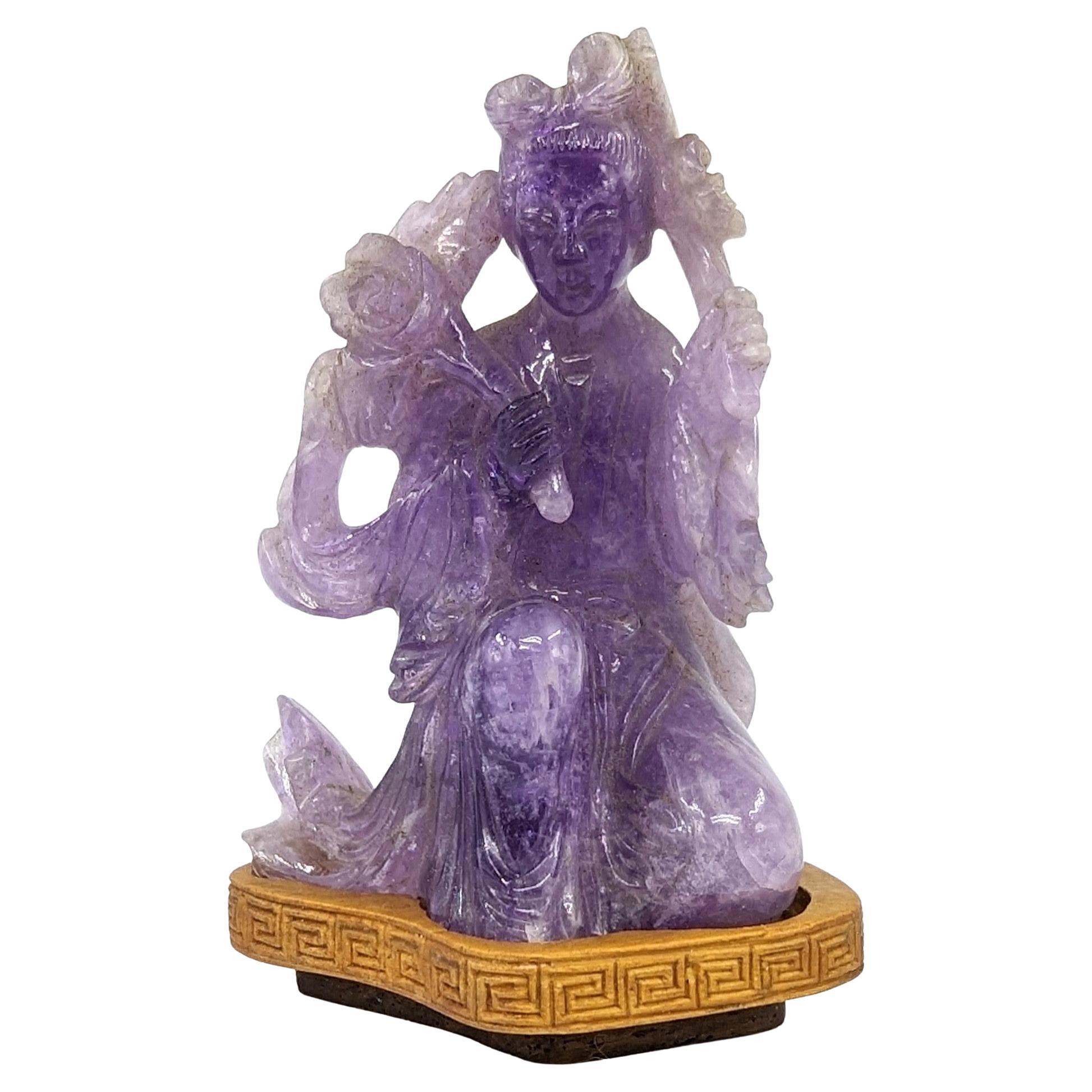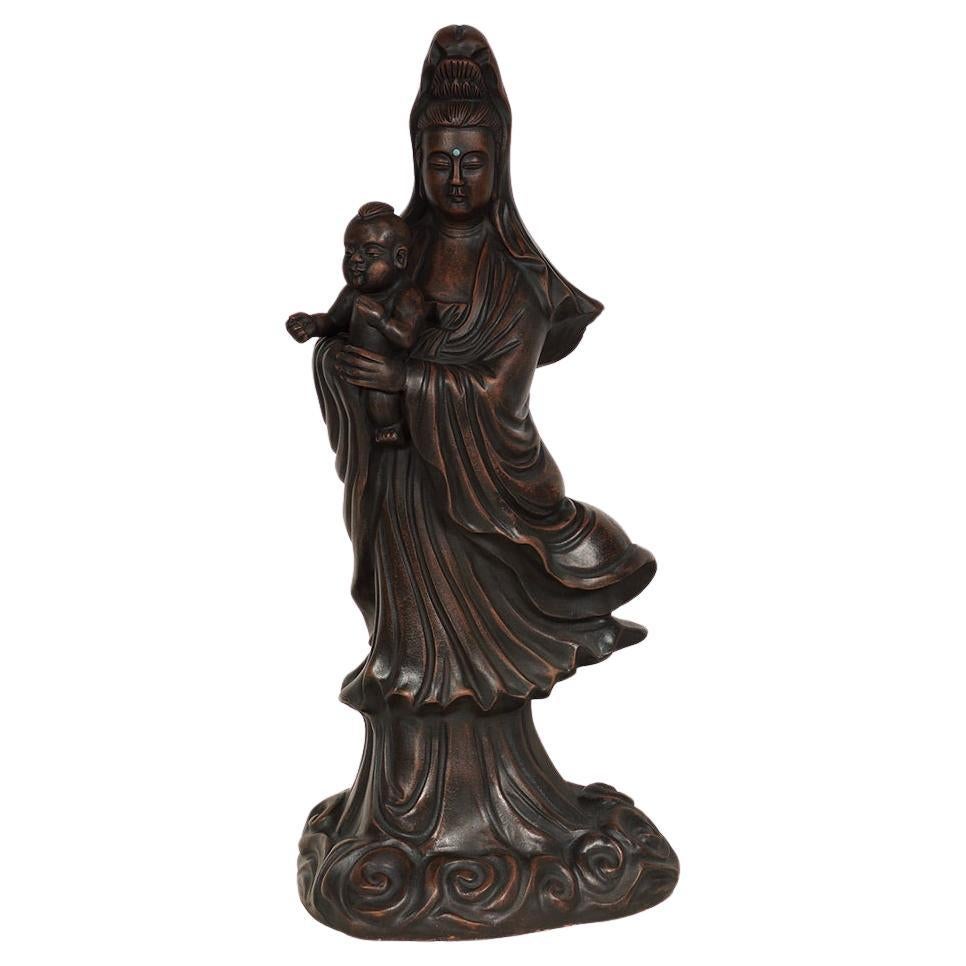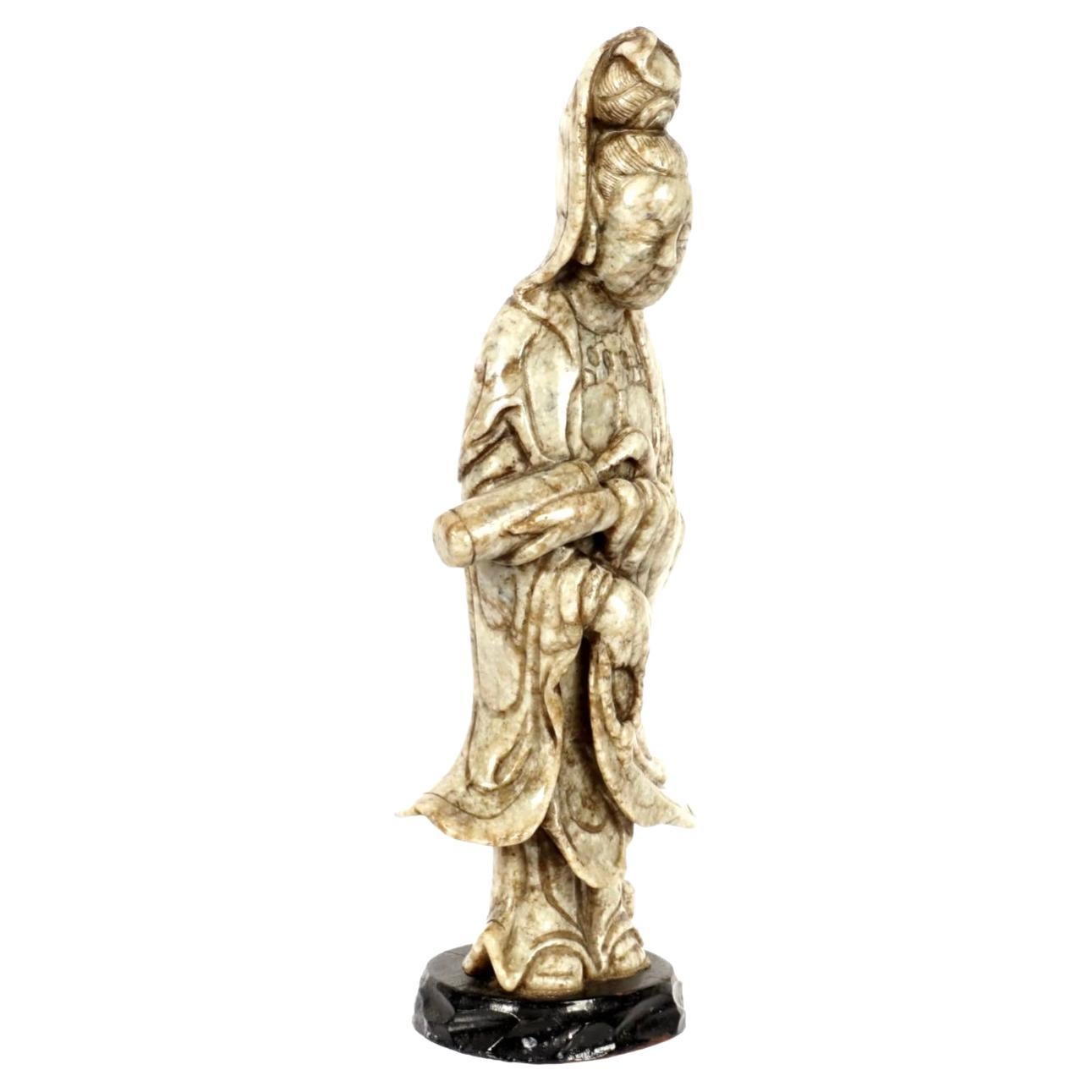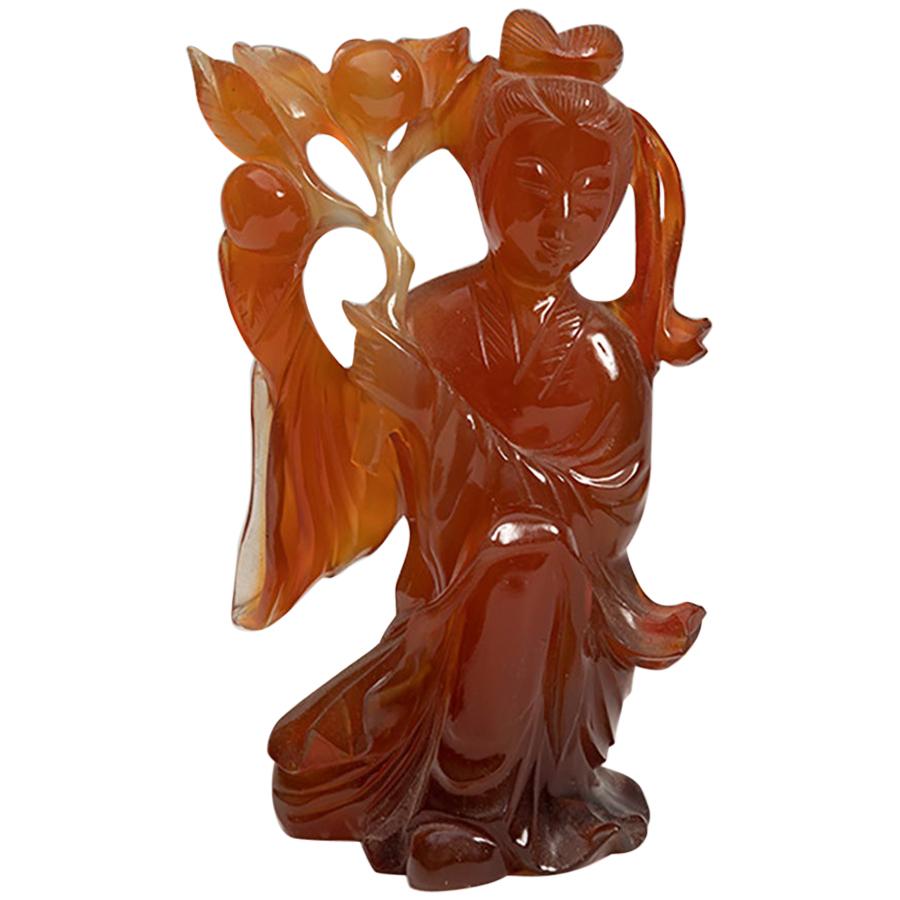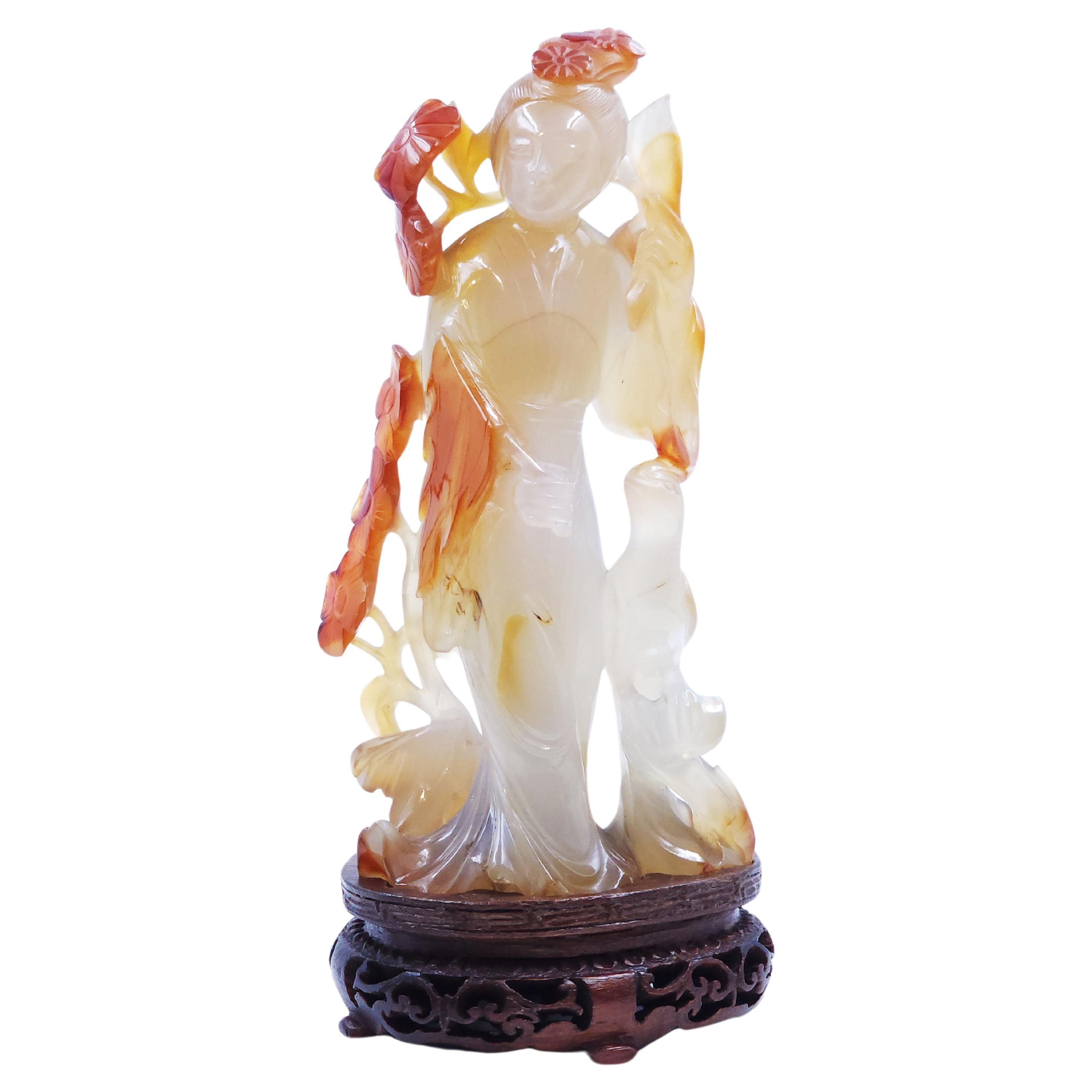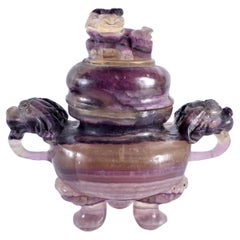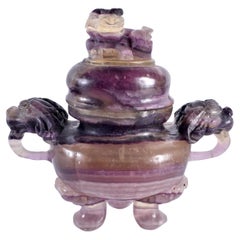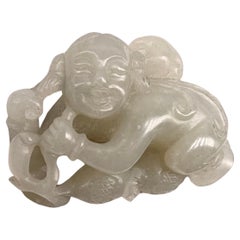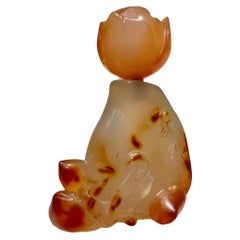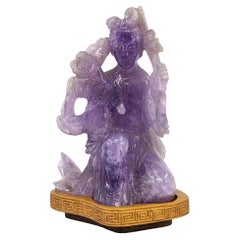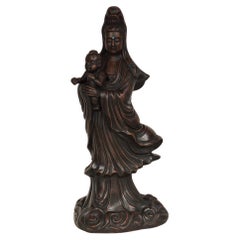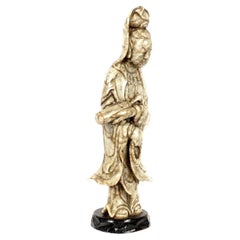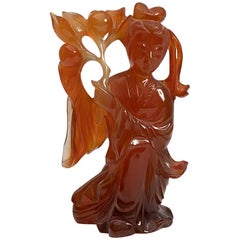Items Similar to A IMPRESSIVE ANTIQUE CHINESE CARVED AMETHYST FIGURE OF GUANYIN. Qing dynasty
Want more images or videos?
Request additional images or videos from the seller
1 of 14
A IMPRESSIVE ANTIQUE CHINESE CARVED AMETHYST FIGURE OF GUANYIN. Qing dynasty
$1,700.99
£1,250
€1,468.54
CA$2,336.88
A$2,608.90
CHF 1,367.03
MX$31,935.52
NOK 17,361.24
SEK 16,369.44
DKK 10,959.88
Shipping
Retrieving quote...The 1stDibs Promise:
Authenticity Guarantee,
Money-Back Guarantee,
24-Hour Cancellation
About the Item
A IMPRESSIVE ANTIQUE CHINESE CARVED AMETHYST FIGURE OF GUANYIN
QING DYNASTY.
Standing in flowing robes and holding a hand fan beside the table with a vase with a flowers , ruyi scepter and a script.
The figure is a masterpiece example showing a highly intricate carving with accurate realism, it is full of life, with an amazing expression on the face and posture.
It’s simply fascinating hand carved work carved out of a dense piece of natural deep purple amethyst stone.
In very good condition commensurate with age. Natural fissures.
Size: H-19 cm, W-10 cm, Weight 463 grams.
- Dimensions:Height: 7.49 in (19 cm)Width: 3.94 in (10 cm)Depth: 7.49 in (19 cm)
- Materials and Techniques:
- Place of Origin:
- Period:
- Date of Manufacture:1880
- Condition:Wear consistent with age and use.
- Seller Location:London, GB
- Reference Number:1stDibs: LU8001243502772
About the Seller
No Reviews Yet
Vetted Professional Seller
Every seller passes strict standards for authenticity and reliability
Established in 2001
1stDibs seller since 2023
16 sales on 1stDibs
- ShippingRetrieving quote...Shipping from: London, United Kingdom
- Return Policy
Authenticity Guarantee
In the unlikely event there’s an issue with an item’s authenticity, contact us within 1 year for a full refund. DetailsMoney-Back Guarantee
If your item is not as described, is damaged in transit, or does not arrive, contact us within 7 days for a full refund. Details24-Hour Cancellation
You have a 24-hour grace period in which to reconsider your purchase, with no questions asked.Vetted Professional Sellers
Our world-class sellers must adhere to strict standards for service and quality, maintaining the integrity of our listings.Price-Match Guarantee
If you find that a seller listed the same item for a lower price elsewhere, we’ll match it.Trusted Global Delivery
Our best-in-class carrier network provides specialized shipping options worldwide, including custom delivery.More From This Seller
View AllA Chinese amethyst carved censor and cover, Qing Dynasty, 19th century
Located in London, GB
A Chinese amethyst carved censor and cover, Qing Dynasty, 19th century.
the rounded body carved with a pair of dragon mask handles, raised on three p...
Category
Antique 19th Century Chinese Sculptures and Carvings
Materials
Amethyst
A Chinese carved amethyst incense censor and cover, Qing Dynasty, 19th C
Located in London, GB
A Chinese amethyst carved censor and cover,
Qing Dynasty, 19th century.
the rounded body carved with a pair of dragon mask handles, raised on thr...
Category
Antique 19th Century Chinese Sculptures and Carvings
Materials
Amethyst
A beautiful Antique chinese white jade open work Toggle /carving.
Located in London, GB
A beautiful Antique chinese white jade open work pendant/carving.
A magnificent Open work White Nephrite Jade carving of the kneeling boy holding a large lingzhi mushroom.
His ro...
Category
Antique Late 19th Century Sculptures and Carvings
Materials
Jade
A Magnificent Chinese Carnelian Agate Snuff Bottle. Qing Dynasty
Located in London, GB
A Magnificent Chinese Carnelian Agate Snuff Bottle. Qing Dynasty.
Antique Chinese Carnelian Agate Hand Carved Snuff Bottle finely carved in...
Category
Antique Late 19th Century Chinese Sculptures and Carvings
Materials
Agate, Carnelian
A Fine Antique Chinese Jade Jadeite Toggle Pendant Carving.
Located in London, GB
A Fine Chinese jade jadeite toggle pendant of a fruit finely carved in relief with a bird and squirrel from the white jade jadeite stone with green incl...
Category
Early 20th Century Chinese Sculptures and Carvings
Materials
Jade
A Fine A Grade Apple green Jade Jadeite Pendant carving of a Eggplant
Located in London, GB
Chinese jade pendant with a yellow metal mount and carved egg plants.
47mm high excluding mount.
In good condition.
Category
Antique 19th Century Sculptures and Carvings
Materials
Jade
You May Also Like
Antique Chinese Carved Amethyst Lady Wooden Stand Early 20c ROC Republic Period
Located in Richmond, CA
An antique Chinese well carved amethyst lady, kneeling and holding bouquets of flowers, on a 2 tone wooden stand with carved border
early 20th century, ROC Republic period
Category
Antique 19th Century Figurines and Sculptures
$1,080 Sale Price
20% Off
Free Shipping
Mid-20th Century Chinese Carved Purple Clay Kwan Yin Statuary
Located in Pomona, CA
Look at this magnificent Vintage Chinese Carved Kwan Yin Statuary. It shows very detailed hand carving works and wonderful clay pottery techniques on it. It is all hand made and hand carved Baby deliver Kwan Yin statuary holding a baby in her arm. A lot of detailed carving works on it. You can see from the pictures that they are in many years history with some age wears. Now you can have them on your collection shelf. They are not only a great adornment but also a wonderful gift! Don't miss it.
Size: 20.5in H x 9in W x 8in D
Origin: China
Circa: 1950s
Material: Purple Clay...
Category
Mid-20th Century Chinese Chinese Export Sculptures and Carvings
Materials
Clay
Chinese Jade Figure of Guanyin
Located in Bradenton, FL
Most likely Ming 15th/16th Century, carved chicken bone jade figure of a standing Guanyin (Quanyin) holding a scroll in one hand, prayer beads in the other. Affixed to carved wood ba...
Category
Antique 16th Century Chinese Ming Figurative Sculptures
Materials
Organic Material
20th Century Chinese Soapstone Guanyin Figure Sculpture
Located in Marbella, ES
20th century Chinese soapstone Guanyin figure sculpture.
Category
Late 20th Century Chinese Sculptures and Carvings
Materials
Stone
Oriental figure, Qing Dynasty, woman carved in carnelian agate
Located in Autonomous City Buenos Aires, CABA
Oriental figure, Qing Dynasty, woman carved in carnelian agate.
Carved carnelian agate figure that represents an oriental woman surrounded by flowers and next to her a long-tailed bi...
Category
Antique 19th Century Chinese Qing Sculptures and Carvings
Materials
Agate
Antique Chinese Rose Quartz Figure
Located in New Orleans, LA
This figure is sitting atop a nice pedestal. A very pretty piece of carved rose quartz.
Category
Antique Late 19th Century Chinese Sculptures and Carvings
Materials
Rose Quartz
More Ways To Browse
Hand Fan
Hand Fans
Carved Amethyst
Stone Carved Faces
Antique Hand Fans
Hand Carved Asian Figure
Chinese Qing Figure
Japanese Carved Flower
Antique Scepter
Chinese Stone Flowers
19th Century Chinese Carved Vase
Antique Hand Carved Stone Figure
Japanese Stone Carving
Chinese Guanyin
Qing Dynasty Robe
Antique Fan Vases
Antique Chinese Stone Carving
Chinese Hand Fan
